Turning Recordings Into Records: Borza Mastering Builds Up
Which ’tis better to be: lucky or good?
In the case of mastering engineer Will Borza, how about heaping helpings of both? On the good side, he’s built up a big list of top credits including Deftones, Foster The People, Tenacious D, and The Smashing Pumpkins.
Looking over to lucky, that dynamite discography’s origins lay in two big breaks. His first one came via the huge Hollywood composer Hans Zimmer. Then Borza’s career levelled up AGAIN with one of the most massively influential mastering engineers EVER, Howie Weinberg. You’ll see for yourself how the latter unfolded in one amazing act, along with a checklist of mastering career insights Borza has culled working alongside Weinberg.
But let’s not write off Borza success only to excellent ears and divine intervention. Getting here also called for grit and determination, opening his solo practice as he did just as the COVID pandemic accelerated in March, 2020. Damn the torpedoes! Borza went full speed ahead.
In this “Master Plan,” Borza shows what it takes to launch a new audio facility in the face of massive challenges. Along the way, he shares:
- What mastering engineers have to do with museums
- Why he constantly changes his suite configuration
- How his YouTube channel supports his overall strategy with dual benefits
- Strategies for work/life balance
- Plus, terrific tips for emerging mastering engineers looking to build their recording or mixing skills.
And we didn’t forget the gear! Borza’s pro workflows, A/D and D/A conversion, plugins, processors, and monitors are all explained in detail.
According to Will Borza, “Great mastering can turn a recording into a record.” Now let’s reverse-engineer that mindset.
Facility Name: Borza Mastering
Location: Los Osos, CA
When it All Began: March, 2020
Clients/Credits: Deftones, Foster The People, Gary Clark Jr., Orianthi, Tenacious D, The Smashing Pumpkins, Thirty Seconds To Mars, Watsky
Master Mind: Hi SonicScoop, thank you so much for chatting with me!
Before I got into mastering, I used to call myself a “guerilla audio engineer,” like guerilla marketing. I would run around with a duffel bag full of mics, cables, a laptop, and an interface—recording, mixing, and mastering my friends and colleagues from school.
One day, a friend of mine called me up and said, “Hey, do you want to be the full-time in-house mastering engineer for Hans Zimmer’s production company here in Santa Monica?” “Uhhhh… let me think for a sec… YES!”, I said. “Ok,” he says, “come down, your interview is tomorrow.” (thanks Mike!)
Working at The Bleeding Fingers Custom Music Shop (Hans Zimmer’s music composer collective) was my mastering bootcamp! I would master and deliver somewhere between 12 and 20 songs every single day with a full spread of parts and alt mixes. After a year of that, I no longer considered myself a guerilla audio engineer, I was a Mastering Engineer! And yes, I did master some of Zimmer’s cues, but no, I’m not credited on them. Such is life.
I fell in love with the “big picture” tone-sculpting aspects of mastering: Understanding what a record should sound like, and the skillset to take any recording and turn it into a record. Do you know what I mean? Not all recordings sound like records. Great mastering can turn a recording into a record.
An Iconic Introduction: Oh man, what a story! Howie Weinberg’s an incredible guy isn’t he? So much fun to work with him!
It was early 2017, and Howie needed a new assistant. He put some feelers out through his network and one of my friends heard about the gig and called in. My friend said to Howie, “I don’t think I’m the right guy for you, but I know THE GUY for you.” and he recommended me (thanks Nick!). So I called Howie and he asked me to come in the next day to meet.
The interview went something like this:
Howie: Hi, I’m Howie, nice to meet you.
Me: Hi Howie, I know who you are, you’re incredible!
Howie: Are you good with computers?
Me: Yep.
Howie: Do you know Pro Tools?
Me: Yep.
Howie: Can you start tomorrow?
Me: yep!
So I did! Right place, right time, I guess. I don’t think Howie had any idea that my last gig was in-house mastering at Remote Control – I’m pretty sure he was just looking for an assistant. But it wasn’t long before I was co-mastering everything that came out of the studio! Borza Mastering found its footing in March 2020 amidst the pandemic, but I still work with Howie remotely on a regular basis.
Lessons Learned from Howie Weinberg: Whew… so many… let me think of a few:
- The fun, romanticized ‘knob-turning’ part of mastering is maybe 5% of the job. Admin, sales, file management, correspondence, sniping pops and clicks, and staring blankly at an upload progress bar is the real day-to-day work.
- Communication is everything.
- For brief moments, crank the ever living $#!* out of your speakers and feel how the music interacts with the room, feel it push against your chest, notice the feeling of your hands on the desk, your feet on the floor, the hair on the back of your arms.
- Never listen with your eyes.
- Treat yourself like a business. Being the best engineer in the world means nothing if the phone isn’t ringing.
- Corollary: Always pick up the phone.
- Mastering a song to conform to an arbitrary streaming normalization value is garbage advice. You master the song so that it sounds its best, regardless of where the streaming normalization numbers are this week—because it’s guaranteed to change again and again.
How I Hear It—My Approach to Mastering: How long do we have? I could write a book!
I like to think that being a Mastering Engineer is kind of like being a museum exhibitor.
The exhibitor studies a painting and then decides what kind of light would present it best without damaging it. They decide whether or not it will be displayed behind glass, whether or not to put a bench in front of it so people can sit and soak it in, or a railing so that they can’t get too close. They know what wing of the museum to put it in based on historical and artistic context. They may select the size, shape, and material of the frame, and so on.
All of these things are calculated artistic choices, but under no circumstance should a museum exhibitor pick up a paintbrush and start painting over the art itself. The choices I make as a mastering engineer, while both calculated and artistic, should never interrupt, misconstrue, or “paint over” the music itself. Mastering should only serve to support and frame the art in its best light.
When I’m getting ready to start a mastering project, the first thing I’m looking for is clear communication with the artist, and any other decision makers on the project. It’s always nice to be able to ask, “What do you love about the mix? Is there anything you’d like me to highlight, or maybe smooth over with mastering? What are your hopes, dreams, or goals for the mastering process? Do you have any sonic references or specific direction?” Communication always results in a better master.
Once I have a good idea of what the artist wants for their music, and I have some idea of where I may choose to take it, I prepare my console for the transfer.
Top Gear: Ah, yes! The fun part!
I use one computer for both playback and record—I guess that’s pretty common these days. I’ve experimented with a two-computer system for independent playback and record, but I feel like the drawbacks outweigh the benefits. I recently upgraded to the new M1 MacBook Pro—it flies!
Initial workflow:
- I’ll usually start by opening up the audio files in iZotope Rx for a visual once-over and repair as needed.
- For bulk file conversion, I’ll use a program called Myriad, which is a super powerful batch editor.
- Once the files are in a “workable state”, I’ll open them up in Reaper in a template that is routed and record-armed for capture with all my favorite meters open and at the ready.
I’m all about speed, efficiency, and getting into a “flow-state” where I’m not at all hindered or distracted by technology or any other outside influence. So I try to automate as much of the digital process as possible.
Plugins
For plugins, I keep it simple to reduce decision fatigue—I don’t want fifteen different 1176 emulations. One is plenty, two is luxury, three and I start to second guess myself.
- The FabFilter suite of plugins is my absolute favorite for clean and transparent EQ and Dynamic manipulation.
- Plugin Alliance if I want something a little more colorful (AMEK and IRON are my go-to’s), and I’ve really fallen in love with the DDMF Magic Death Eye compressor plugin.
- iZotope Ozone and Oeksound Soothe2 pop up every once in a while as well.
- I’ll use HOFA for finishing (authoring DDPs, Vinyl, etc.), and
- DDMF PluginDoctor for testing, tuning, and analysis.
Analog Workflow
The first thing I decide is what DAC I want to use. I have 3 choices, each sending audio to my Manley Backbone transfer console on inserts 1, 2 and 3 (so I can easily A-B-C between them): Lynx Hilo, Dangerous Convert-2, and Antelope Pure2.
I think of DACs kind of like glasses: certain prescriptions work better for certain songs to make them come into focus.
- The Hilo is very analytical and reproduces exactly what you throw at it with almost zero added coloration.
- The Convert-2 reproduces audio in a very musical way – a little bit of subtle harmonic addition, plus an “analog-y” roll off up above 20k.
- And the Pure2 does this really cool midrange-forward, bright thing that just crushes it for rock and heavy stuff.
My current favorite of the three is the Dangerous Convert-2 for most material, but sometimes the other two just blow me away on certain songs.
Processors
Next up, I have six main processors (in addition to the converters and the backbone itself) and they all cover different bases. Here’s how I have them wired into the console:
Insert #1 – A custom line-amp color box I designed with Chris Henderson of HendyAmps called “Monet” with a million and one different color options packed into four knobs. Nobody else can sound like this box, because I have the only one.
Insert #2 – Dangerous BAX EQ – can be operated in L/R or M/S mode via the Backbone. It’s great for filters and broad tone shaping.
Insert #3 – This slot is empty right now. If you have any suggestions, DM me! This slot can also be switched to M/S via the Backbone.
Insert #4 – Thermionic Culture Phoenix Mastering Plus – the mastering version of Thermionic’s incredible Vari-Mu style all-tube, hand-wired compressor with optional bypass of the threshold if all you want to use is the sweet & sexy valve flavor. It can be swapped with Insert #5 with a switch on the Backbone.
Insert #5 – Manley Massive Passive Mastering Edition – they’ve been described as “Pultecs on steroids”. The incredibly flexible, transparent to oh-so-rich, instant “sounds-like-a-record”-izer… the Massivo. This one is all stepped for easy recall, and can be swapped with Insert #4 on the Backbone for pre-compression EQ if that’s what floats your boat.
Insert #6 – This is where I test and demo new gear, patchable via XLR out of the Backbone.
Insert #7 – HendyAmps Michelangelo EQ – a desert island all-tube EQ. It’s really hard to make things sound bad with this one, but also it has a TON of sound to it, so if your goal is to stay transparent, this might not be your first choice.
Insert #8 – Rupert Neve Designs Master Buss Processor—a desert island Compressor. This box was my first analog piece of kit. The “Silk” saturation feature is worth the cost of admission on its own, and having it placed at the end of the analog chain as a final dynamics processor is where it shines for me.
It’s rare to use all of them at the same time. Remember the museum exhibitor? All of these in at the same time would be like painting the Mona Lisa blue. Usually one or two processors do the job.
Lastly, the analog signal must be captured, converted, and returned to the digital realm. For that, I use the Dangerous Convert-AD+. This thing is built like a tank, clips like no other, has headroom for days, and you can punch in an optional transformer with an “emphasis” dial that’s basically a hi-fi knob. It sounds absolutely incredible no matter how you use or abuse it.
Monitor control is handled by the Grace M905 where I’m taking input at the point of DAC, Pre-ADC, and DAW Output, so I can A/B monitor those critical points in the signal path. The Grace then outputs to Barefoot Footprint 01’s and Kali Audio IN-5s, and I also use Audeze LCD-X and Beyerdynamic DT1770 headphones religiously.
Flexible Strategies—Why I’m Always Trying New Configurations: Oh yeah! Everything I just said about my gear and current workflow—could be totally thrown out the window tomorrow. I’m always trying new processes and tools to see if they have what it takes to outperform the current set-up. I’m constantly moving my furniture around searching for great balances of sonic excellence, creativity, and ergonomic accessibility.
Recently, for example, my keyboard stand was facing my speakers and computer monitor while the rest of my analog equipment jetted off in a L shape to my left. I see a lot of studios where the analog desk is facing the speakers and the computer is on a small desk in the corner sort of as an afterthought.
One day I thought to myself, “It’s 2021 – we’re spending 90% of the time on the computer and 10% in front of the board. Why not reverse that model and put the gear to the side and set the computer up in the sweet spot?”
Well, that was fun, and now I’ve moved everything again. All my analog equipment is directly behind me except for the Hilo and AD+ so I can keep my eyes on the meters. If I need to make an analog decision, I have to calculate it in my head, turn around, make the move, turn back and decide whether I like it or not.
Delayed gratification makes my moves far more intentional. Less sweeping, more critical listening and problem solving. I can already tell though that this setup won’t stay for long.
At the end of the day, it’s not the gear, it’s the ear.
And that being said, a small-and-mighty rig can sometimes out-perform a large and complex one. Right now, I’m planning on doing some extended traveling (why not? Covid has my wife and me “digital nomading” for the foreseeable future. When else will we get an opportunity like this?). I have a “noisy cricket” mastering rig in mind to bring with me:
The Dangerous Convert-2 and Convert-AD+ with the BAX EQ sandwiched in-between for a 3u go-bag of sonic bliss. Think about it—you’ve got up to 4dB of analog gain by playing the different calibration settings off each other, plus the luxurious baxandall curves and filters, and optional transformer mojo hi-fi injection on the AD+. I think that little rig would pack a huge punch.
You know what? I’m gonna try that for a few weeks here in my studio for proof of concept. I’ll let you know how it works out!
Biz Builder: There’s nothing like a global pandemic to give you a reality check, right? I can’t be the only one who looked at the situation we’re all in and thought “Hmm… maybe the city life isn’t as glamorous as it once seemed”. It definitely caused me to reflect inwardly on what my values are, future goals, career trajectory, all that jazz.
Obviously one of the biggest benefits of moving out from the city is the cost savings. My wife and I have been able to put away a sizable chunk of cash towards a future down payment, plus I was able to sink some cash into building out my studio.
Before moving out here, my rig was the Pure2, Grace, Neve, Monet, and Barefoots. Everything else was purchased after March 2020—and with cash too, no financing necessary. It’s kind of incredible how quickly you burn through cash living in the city and don’t even realize it.
I think one of the biggest challenges is missing the face-to-face interactions. Nothing beats in-person relationships both in business and in life, and I think that’s been a challenge for everyone this past year, not just startup mastering studios.
Video Go: Making videos is such an awesome creative outlet, I love it! Back in 2016 I was inspired by Casey Neistat’s “Daily Vlog” to pick up the camera and make a new video every single day. I kept it up for a year—please don’t go searching for them, some of them are so embarrassing.
After a year of making a video a day, I had grown from zero subscribers up to about 1000. In the years following, I have made less, but more directed videos and grown that number from 1000 up to about 3k.
With these kinds of numbers, the ad revenue is negligible, but having a few hundred videos out there working for you, getting your face in front of new people while you sleep, is something I’d recommend to anyone who is comfortable in front of a camera.
Quite a bit of work has come in from people who found me on YouTube, so it’s a great combination of “Wow this is fun and scratches my creative itch” and “Wow this is actually great for business!”

Unforgettable—A Mastering Project I’ll Remember: One time at Howie’s we got some acetate demo pressings of some Wings tracks that our client wanted transferred for a documentary project. I got to do that one solo because Howie had an in-person session that day—kind of absolutely insane to hear Sir Paul’s voice coming out of your gear. Makes you feel important, ha!
In 2017, Spoon released a remastered reissue of their album “Ga Ga Ga Ga Ga” and it was my first time working from a ¼” tape transfer instead of digital files. It’s so much fun to work that way! We were working on this record a week before I got married, so whenever I think back to my wedding, Spoon is the soundtrack.
And I think everyone remembers the first time they have a record that goes gold or platinum or wins a Grammy. I’ve got one gold so far, and three Grammy certificates. I’m hoping to one day have walls like Howie. No joke, he doesn’t have wallpaper. He just has floor to ceiling gold and platinum records hanging all over the house.
What I Wish Everyone Understood About Mastering: There’s no black magic or dark art here. Great mastering is just the result of someone focusing on one very narrow but massively important part of the record-making process and becoming the absolute best at it.
It’s no different than a virtuosic musician—their instrument happens to be a guitar or violin. My instrument sits in a desk and has tubes and transformers in it.
Artists, Engineers, Producers, Songwriters, Labels, Publishers, Managers, etc. all specialize in the one thing they do best. Finding a team that works for you—one that benefits from your expertise and one where the expertise of others can benefit you—may be the most important thing you can do in your professional career. As part of a team, we’re all better off.
Listen Better—How to Sharpen Your Ears: Well, there’s the basics, like internalizing what different frequency ranges sound like so you don’t have to go EQ “fishing,” and learning to hear compression attack and release times is important.
Of course, musical knowledge is a huge plus—if you know your way around the circle of fifths, you’ll have no problem crafting a great mix given a little bit of practice and experience.
Here’s a fun tip I give to people who want to learn to master, and I think it applies to anyone who wants to work on their recording or mixing chops:
- If you don’t have them already, get a record player, phono amp, audio interface, and some records.
- Set it all up and work on getting the cleanest, purest, truest digital capture of those records. Then use digital EQ and dynamic manipulation to get them sounding as close to the official release as possible.
This has so many benefits:
- If you’re capturing a well-known record, you know exactly how it’s supposed to sound and you’ll immediately be able to hear if something in your recording needs to be adjusted.
- You’re not just passively listening to the music anymore, you’re actively listening, analyzing, and judging the quality of great records.
- You familiarize yourself with the traditional playback-record techniques that mastering engineers have been using for decades.
- You get to learn about upgrading components like needles, amps, and converters to get a more pure, musical, optimized signal path.
- In the process, you will have built yourself a super sweet, world-class vinyl hifi station that will be the envy of all your friends.
Off Duty: I’m a huge proponent of work-life balance. I mentioned one of Howie’s lessons earlier, “Always pick up the phone”. I don’t do that, because I don’t believe that “always on” is healthy or sustainable.
If you’re always picking up the phone, you’re training your clients that you’re available to work for them at 11pm on a Friday night. I don’t want to be working at 11pm on a Friday night. If that means I don’t get to work with clients who demand I work at that hour, fine by me. There’s no shortage of music out there that needs mastering.
In my calendar you’ll see “sacred work hours” where I do nothing but work – no dog walks, no social media, no chores, just work. And then you’ll also see “sacred rest hours”, where the phone, computer, and studio are off. That’s me time, that’s family time, dog time, and ever since I moved out of the city and gained a backyard, that’s BBQ time!
My best friend lives in Austin, TX and whenever I fly out to visit, we get Texas BBQ at Franklin, Terry Black’s, Snow’s… it’s always a highlight of the trip. So when the pandemic hit and we all had to stay home I figured, what better way to pass the time than to get into low and slow Texas style BBQ? So that’s been my pandemic project –perfecting smoking and BBQ.
I got a 22” Weber Smokey Mountain, and more recently I added a Gen.3 Kamado Joe to the gear list, and every weekend I get up early to start the fire for that night’s dinner. I’ll smoke brisket, beef ribs, pork ribs, chicken, I love smoking turkey. And then, since I’m Californian, I can’t keep to strict Texas-style. I live near Paso Robles wine country, so instead of spritzing with apple juice or worcestershire sauce, I spritz with Zinfandel!
I’m also constantly trying new weird things to smoke—smoked donuts don’t really work out, but BBQ’d donuts are scary good. And smoked Cheez-Its will change your life!
Bonus Track: I just want to send a huge THANK YOU Kali Audio for introducing us, this has been so much fun! (Editor: Seconded!)
And to anyone reading: if something in this interview struck a chord, I’d love to hear from you! Head over to my website and get in touch. You can also find me on YouTube as “The Analog Vlog” and Instagram as @BorzaMastering.
— interview by David Weiss.
— David Weiss is an Editor for SonicScoop.com, and has been covering pro audio developments for over 20 years. He is also the co-author of the music industry’s leading textbook on synch licensing, “Music Supervision, 2nd Edition: The Complete Guide to Selecting Music for Movies, TV, Games & New Media.” Email: david@sonicscoop.com
Please note: When you buy products through links on this page, we may earn an affiliate commission.







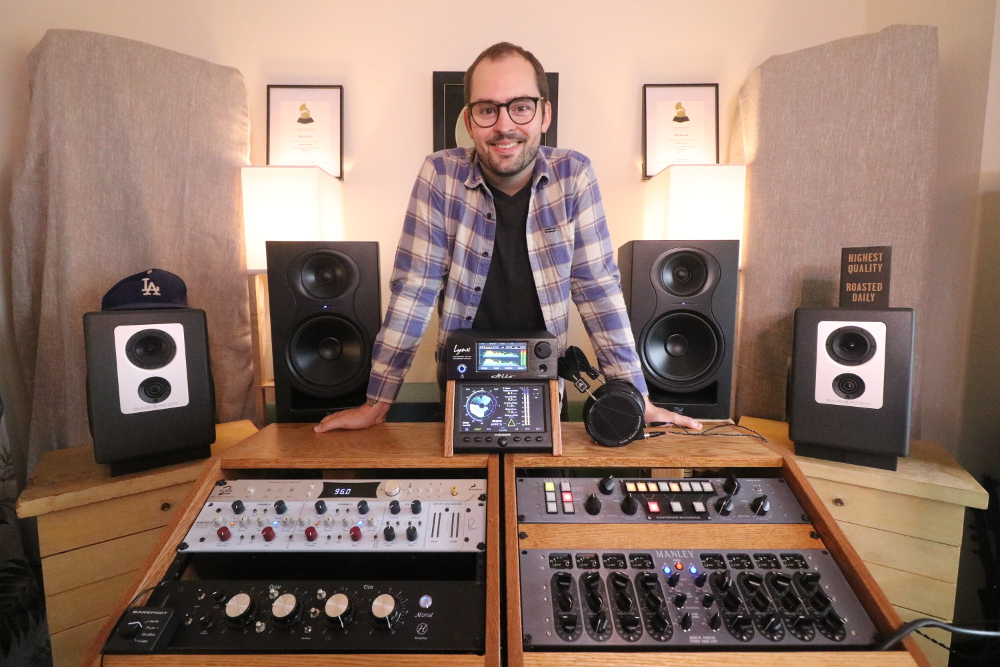
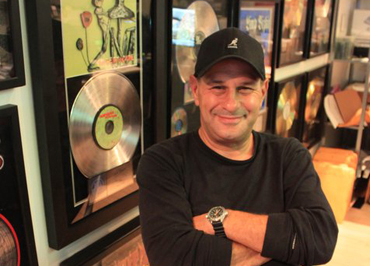
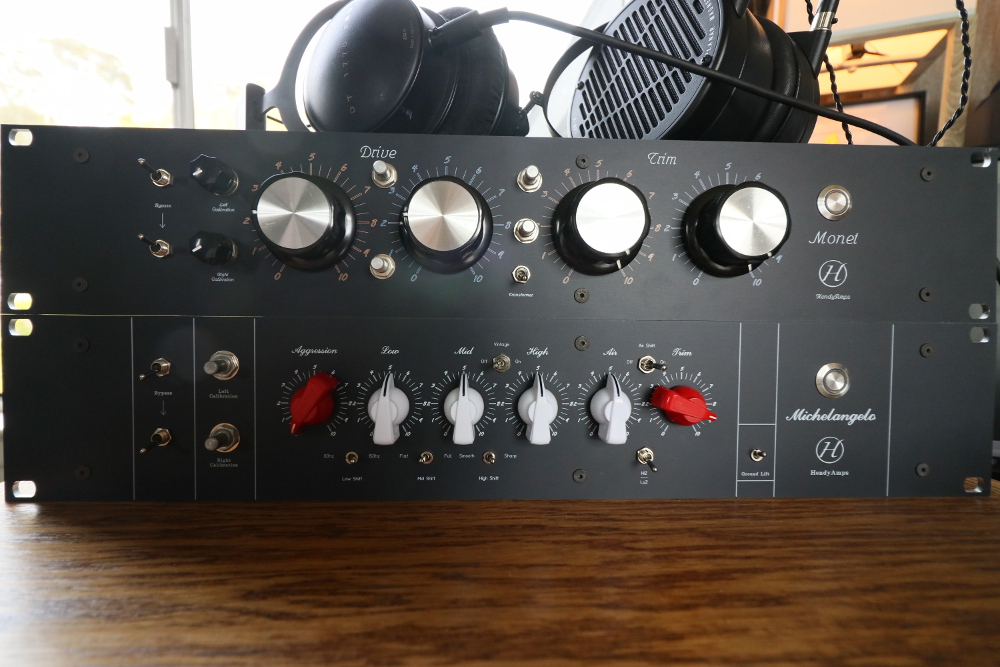
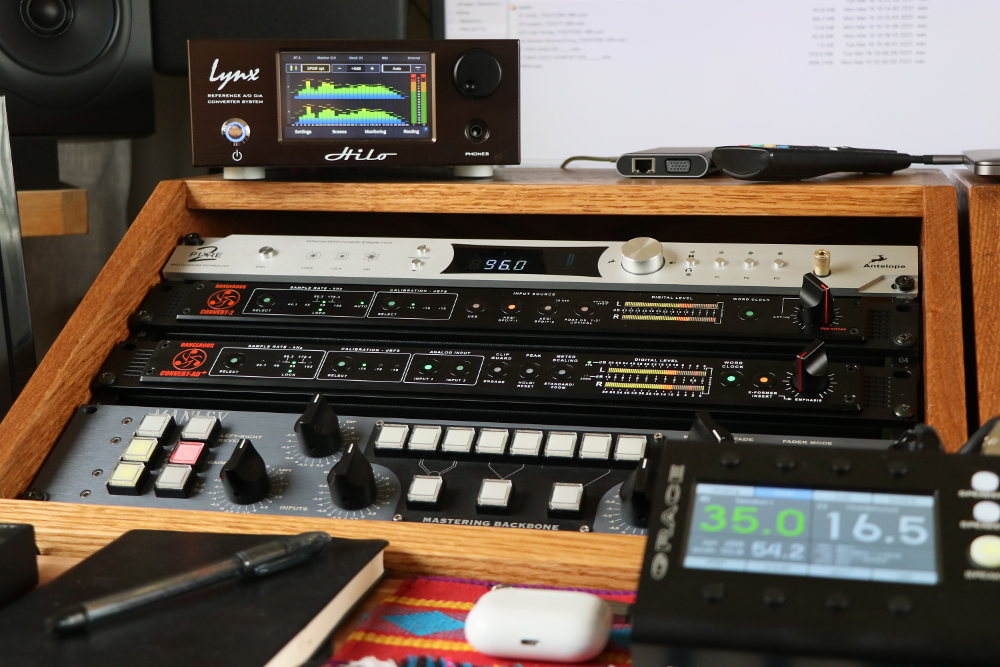
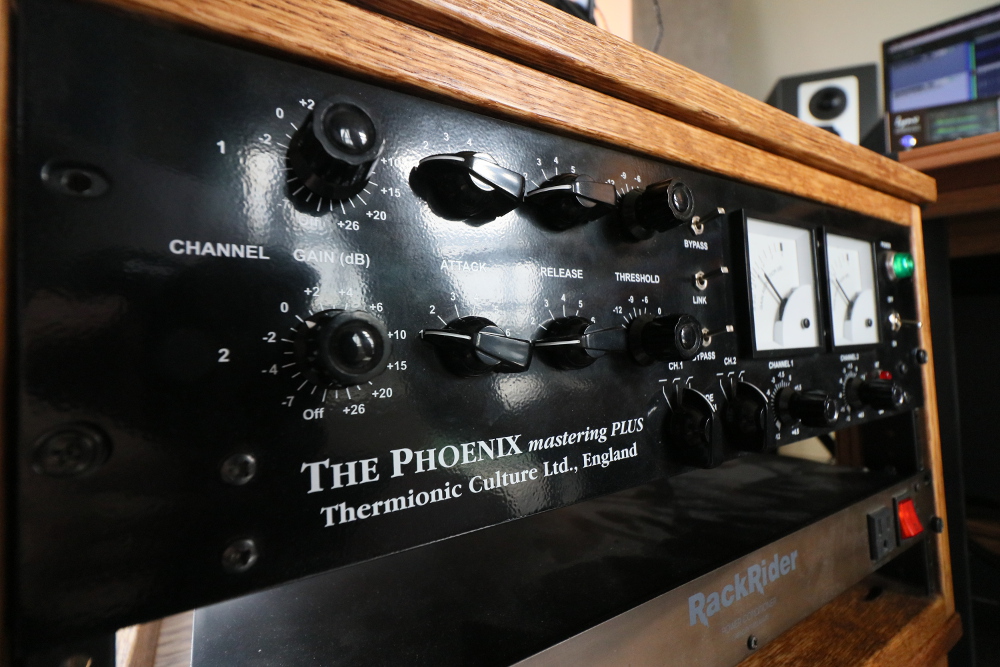
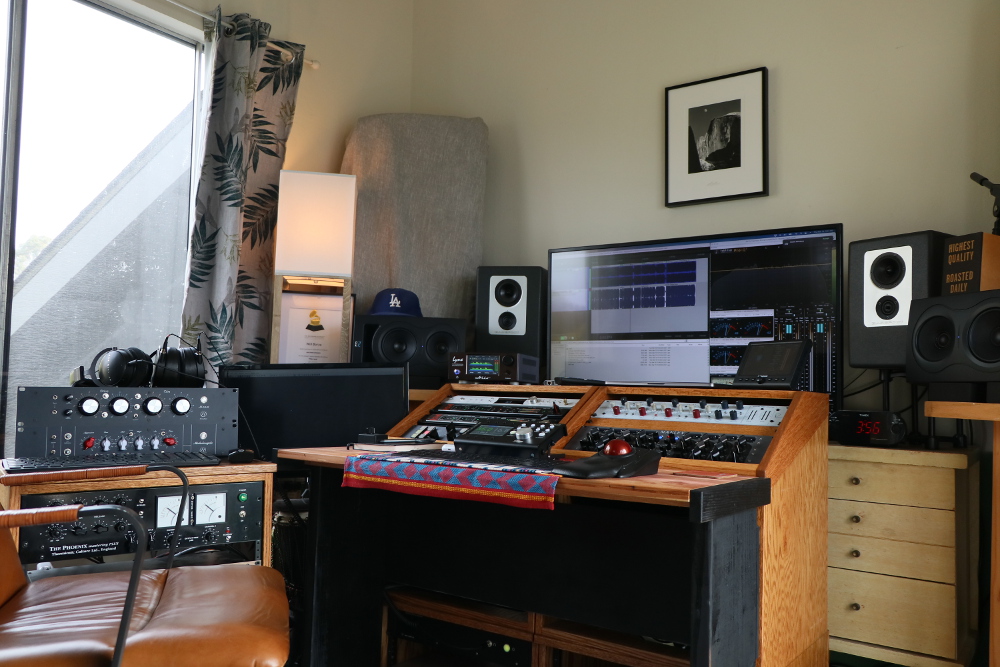
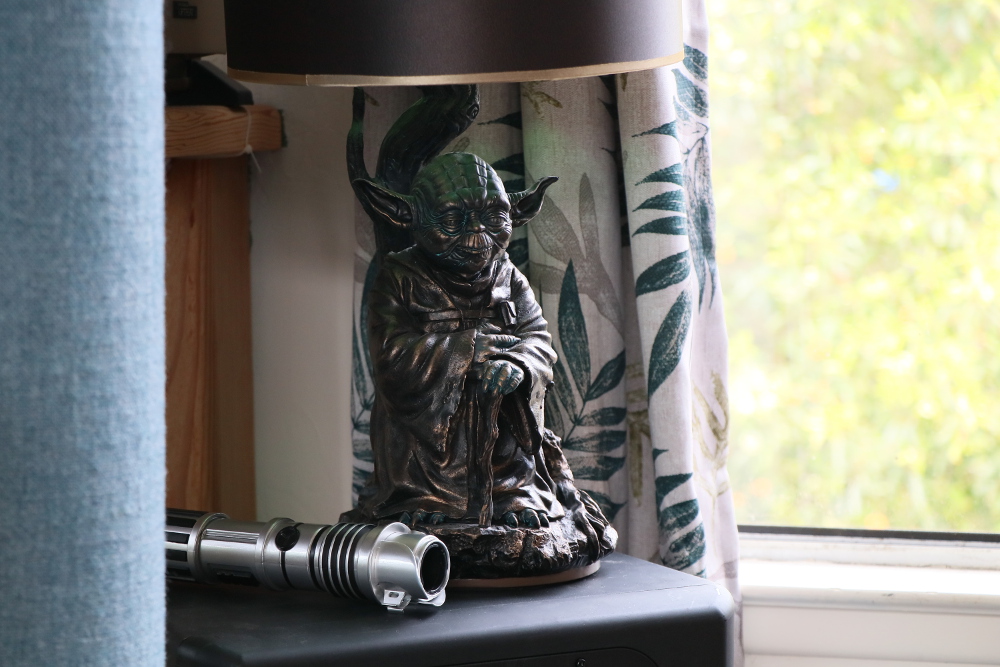
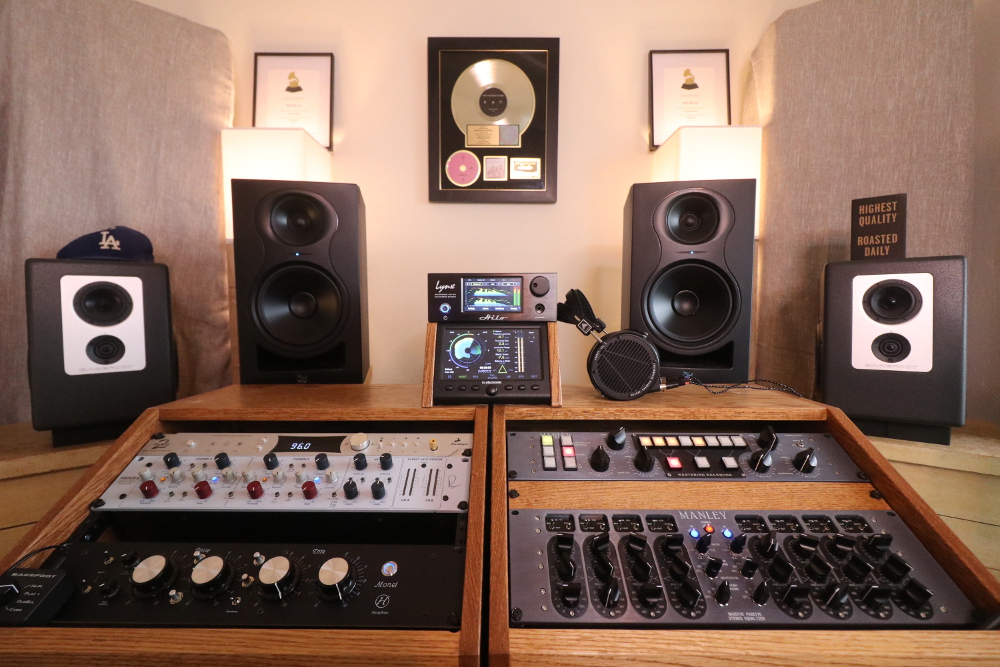
[…] Looking over to lucky, Read more… […]